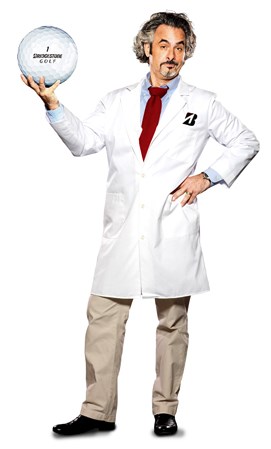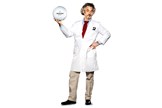The science of golf balls
Last updated:
With some of today’s tour players averaging more than 300 yards off the tee and generating clubhead speeds in excess of 125mph, it’s hard to believe that a ball weighing no more than 1.62 ounces can withstand such violent treatment.
The transfer of power and resulting speed of the ball through its long flight trajectory at the hands of a top player is breath-taking. So too is the deformity it faces when it first comes into contact with the clubface.
But, thanks to the fact that golf manufacturers like Bridgestone have invested millions to evolve the game’s No.1 piece of equipment, the modern ball does more than just survive. In fact, the cumulative effect of the technological advances in the last half-a-century has produced a ball that can travel further than any other round object of the same size and weight launched under the same conditions. The modern golf ball is a minor miracle of physics and engineering.
Pioneering techniques
Bridgestone pioneered injection moulding technologies to produce outstanding solid golf balls. The process involves melting resinous materials at high temperatures and injecting the molten material into a mould using high-pressure screws that are then left to cool and solidify. The resulting thin inner layers provide unparalleled consistency for distance performance and soft feel.
One-piece balls made of a single high-restitution synthetic rubber deform to a large degree at impact, so they lose the energy required for carry and offer less distance than other balls. In contrast, the core of the dual-structured ball is wrapped in a cover that enables the energy at impact to be transferred efficiently to the ball’s flight. As the cover is also made of a material that can recover its shape quickly, these balls generate excellent distance. Some manufacturers have added a “soft feel” conducive to greater control.
Traditional two-piece balls offer more distance than wound balls, but have a hard feel at contact. By adding an extra intermediate layer between the core and the cover, Bridgestone has designed a three-piece ball that produces satisfactory repulsion for those players with both high and low swing speeds.
Multi-layer three-piece and four-piece balls see the core wrapped in multiple covers and advances in technology mean these materials can be combined to enhance performance features. This includes the remarkable capacity to compensate for slightly mishit shots.
The distance the ball will travel is determined by three key elements – initial velocity, angle of flight and spin. All three need to be in harmony for maximum distance to be achieved.
The dimple truth
Dimples play a major role in determining the distance a ball flies. The two principle effects of dimples are to increase lift and reduce air resistance, offering greater stability in shot trajectory. And though they all appear to be much alike, dimples come in a variety of patterns and sizes so that their impacts differ depending on alignment and the depth of the depressions. The number also varies from between 300 and 500 per ball, though these numbers in themselves do not significantly affect distance. Ideally, dimples should be spread evenly across the surface of the ball in recurring combinations of one shallow and one deep dimple.
On a ball hit with backspin, dimples will cause currents of air moving above the ball to move faster, so lowering air pressure and promoting lift. As dimples are made shallower, trajectories tend to rise.
The first dimple development boom in the game was between the 1930s and 1990s, when studies of dimples affected the trajectory of a ball and its velocity was improved. More recently, advances in technology have made it possible to arrange a seamless dimple configuration that uniforms the aerodynamic property for any position on the ball to provide even trajectory.
Bridgestone’s “Dual Dimple Technology” sees the inside dimple increase thrust power at launch for greater distance and an outer dimple promote a shallow angle of descent for more roll.

